Discover, Learn, immerse, Connect
Chadar Badar
R A R E F O R M O F I N D I G E N O U S S A N T H A L P U P P E T R Y
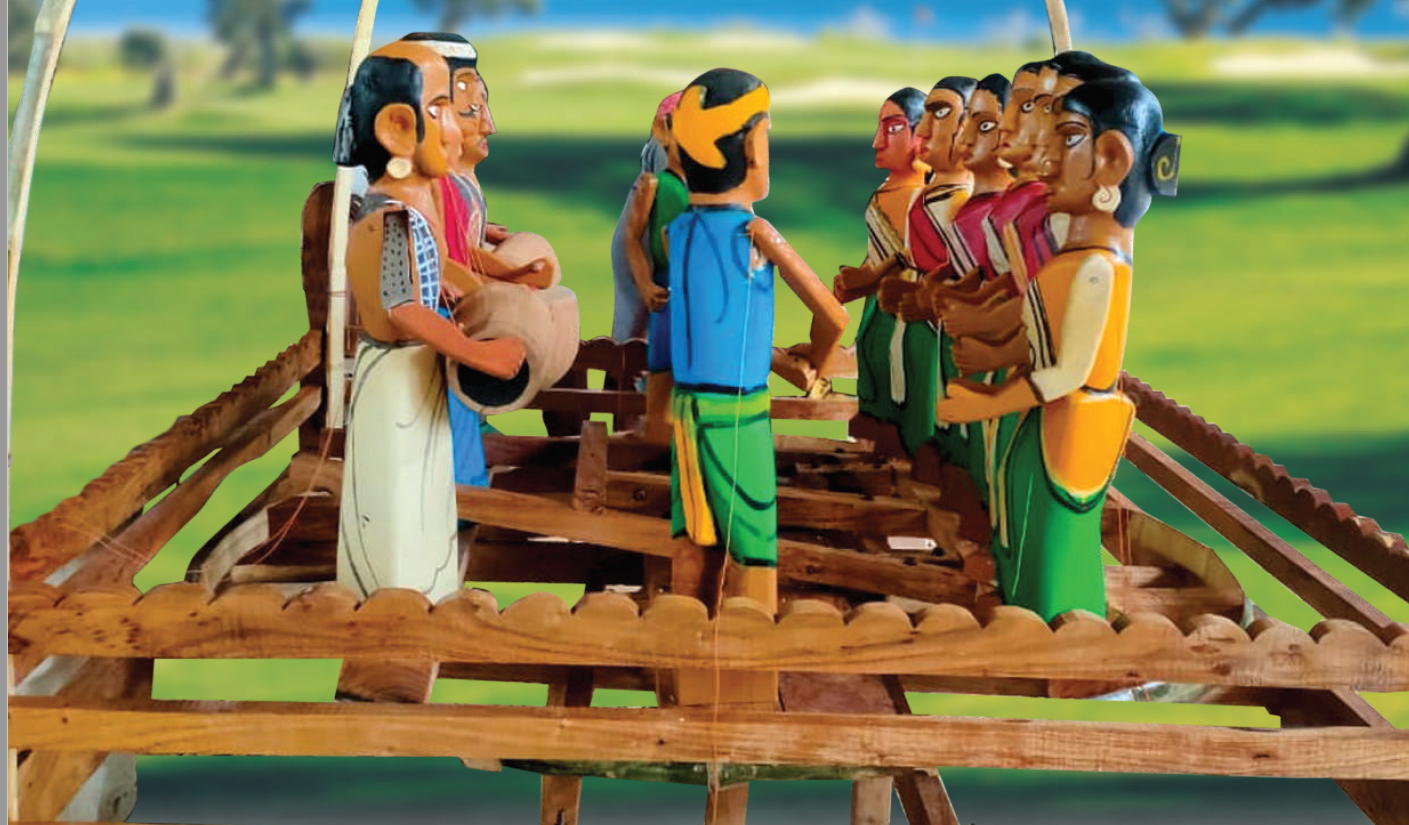
Chadar Badar or Chadar Bandhani is a very rare form of indigenous Santhal puppetry and a hall mark of Santhali culture. Puppetry has always been associated with folk culture and has played an important role in folk education. This dying art form was once prevalent in the Santhal communities living in Jharkhand, West Bengal, Odisha, Bihar and Assam. Today, a handful of Chadar Badar puppeteers are seen scattered in the Birbhum, Bardhaman, North Dinajpur and Bankura districts of West Bengal and Dumka region of Jharkhand. The main reason for the art form becoming obscure is that only very few members of the community have learnt the basic art of making the puppets or have acquired the skills to bring them to life on make-shift stages. However, with the help of social activists and government support, some members of the community are making a valliant attempt to retain this art form and pass it on to the future generations.
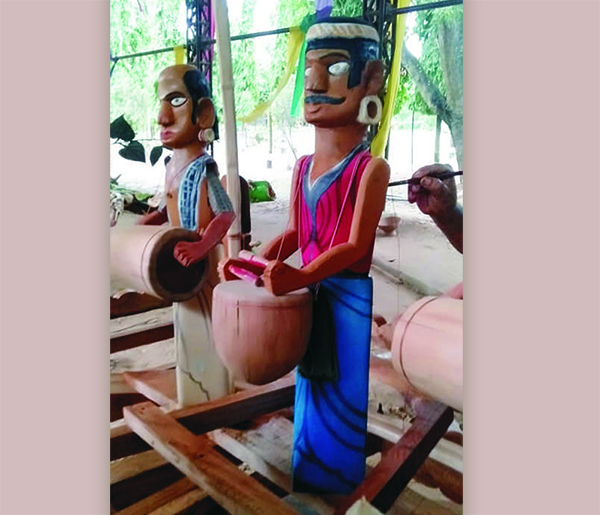
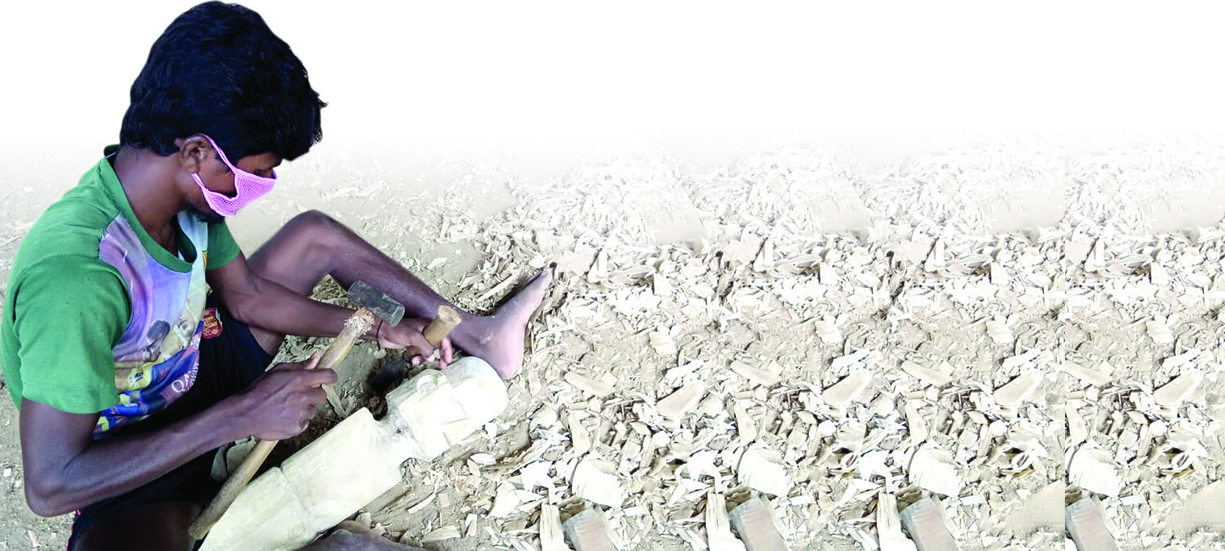
Making the puppets in the main aspect of Chadar Badar and requires technical skills. Created with intricate workmanship, the puppets are made of bamboo or wood and are about 8 to 9 inches in height. Carving is done on light wood available in the area and once the puppet takes shape it is painted and clothed. The puppets have movable limbs with intricate lever controlled mechanisms, which are manipulated by the puppeteer. For the performance, the puppets are placed on a small platform with a canopy or hung inside a wooden box, open on three or all four sides. The curtains of the make-shift stage are removed just before the performance, so that the audience does not get a chance to see the puppets earlier. The string, lever and sticks used to move the puppets are covered with a chadar or a wrap. When the puppeteer tugs the string, it turns the lever, which causes the sticks to move up and down, thereby making the puppets’ limbs move. The puppeteer narrates stories from ancient Santhal culture using words and verse and making the puppets provide the correct gestures to bring out the essence of the story.
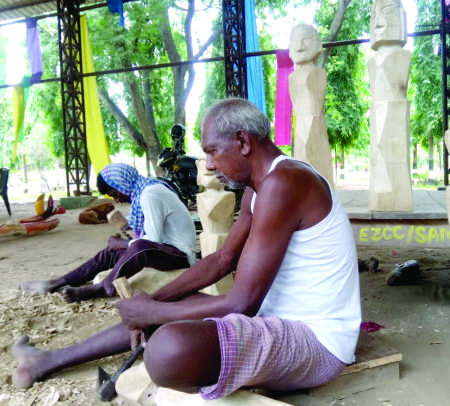
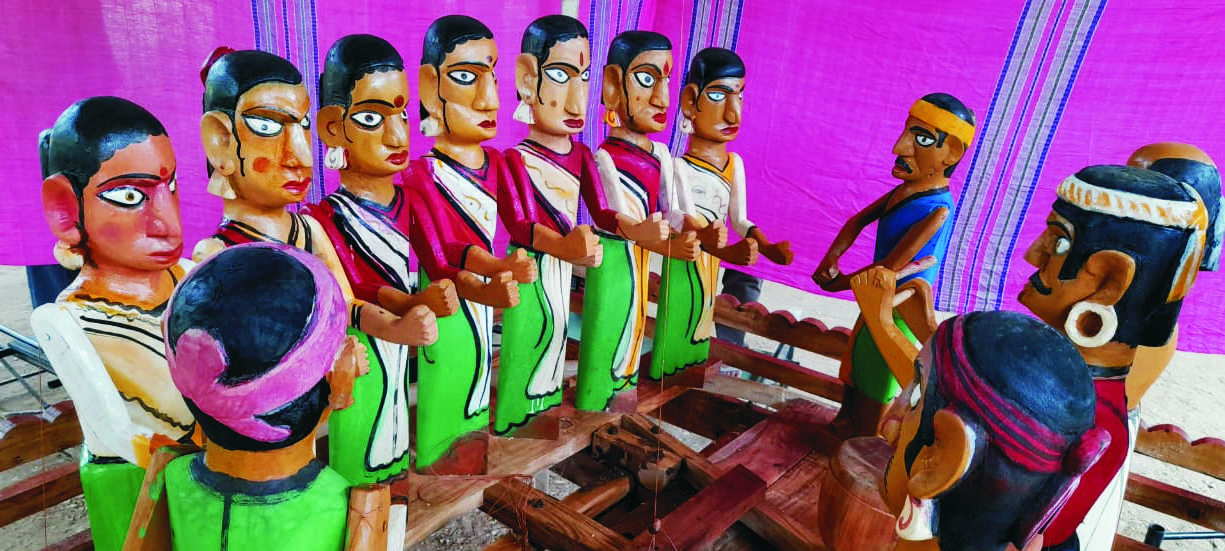
A combination of traditional musical instruments, which include the Baje Banam, Lagara, Tirenya or flute and the Tunda or Madal accompanies the performance. W h e n t h e f i g u r e s d a n c e , t h e synchronization is so perfect, that the puppets appear automated. Accompanied by the music and singing, the puppets create an illusion of a rhythmic Santhali dance. The performance is a display of indigenous animation and simplicity and an attempt by the members of the community to retain their own culture. The puppets are manipulated with the help of the twisted string on the puppeteer’s fingers.
Few members of the community continue the tradition of performing this form of puppet theatre during the Dasain festival, held around the time of Durga Puja. They take the puppets to neighbouring as well as distant villages, put up shows and receive rice, pulses and alms in gratitude for their efforts. The shows are also put up during Santhali festivals and other happy occasions like weddings. There are some district-wise differences in the presentation of Chador Bador. In Birbhum district, the stage is usually round in shape, while in Dinajpur it is normally square.
The timing of a Chadar Badar show is variable and depends on the interest of the audience. If the spectators wish to see more, the puppeteer can easily increase the length of the performance. The puppeteers are emotionally attached to their puppets and treat them like their own children. All the puppets are given names – while Ram and Lakshman are common names for the male puppets, Khukumoni, Sonamoni and Lakshmimoni are common names for the female puppets.
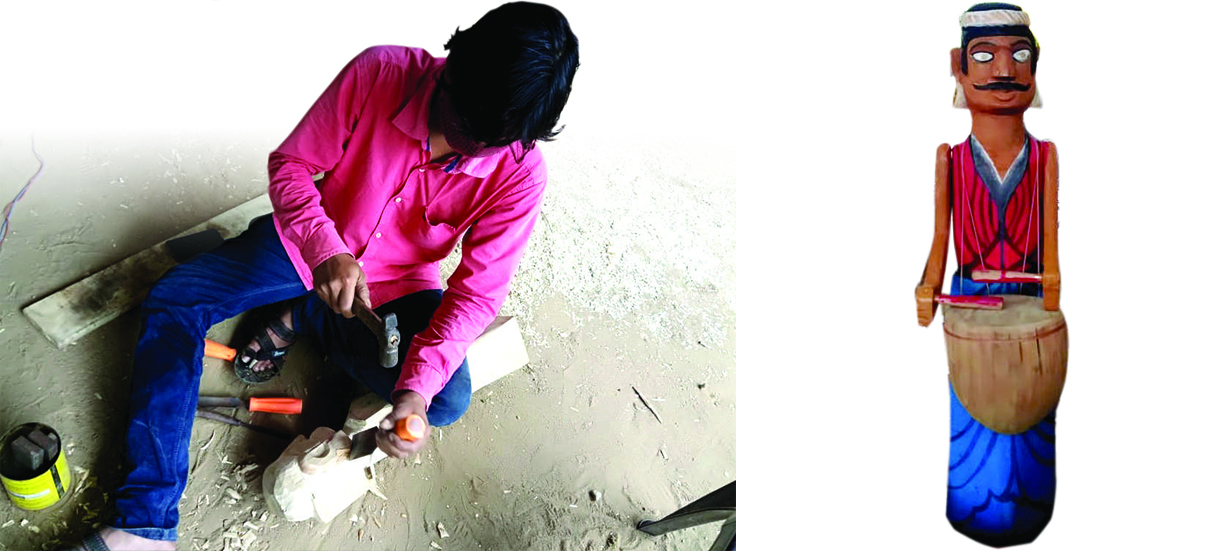
In Birbhum, the Chador Bador artistes are seen in the Gopal Nagar – Kamarpara and Nimdanga villages. EZCC conducted a workshop at its Srijani Shilpagram, in Santiniketan, Birbhum district, for the making of the Chador Bador puppets. Like the puppets from the other parts of the country, these puppets can also be used for home décor and installations in public places.
Even a few years ago, the art was completely lost and very few younger Santhals even knew about it. However, the art is gradually being revived and many young people are learning the art and are now performers.
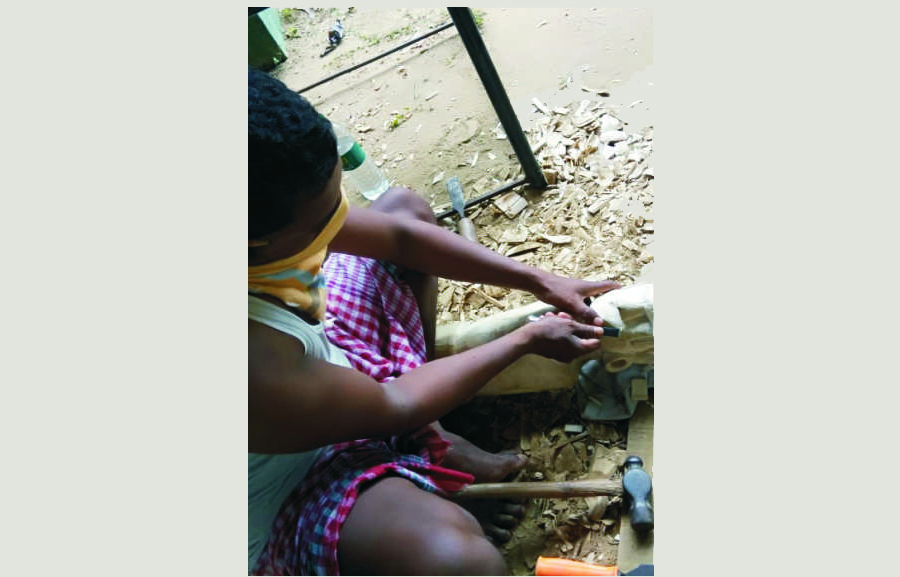
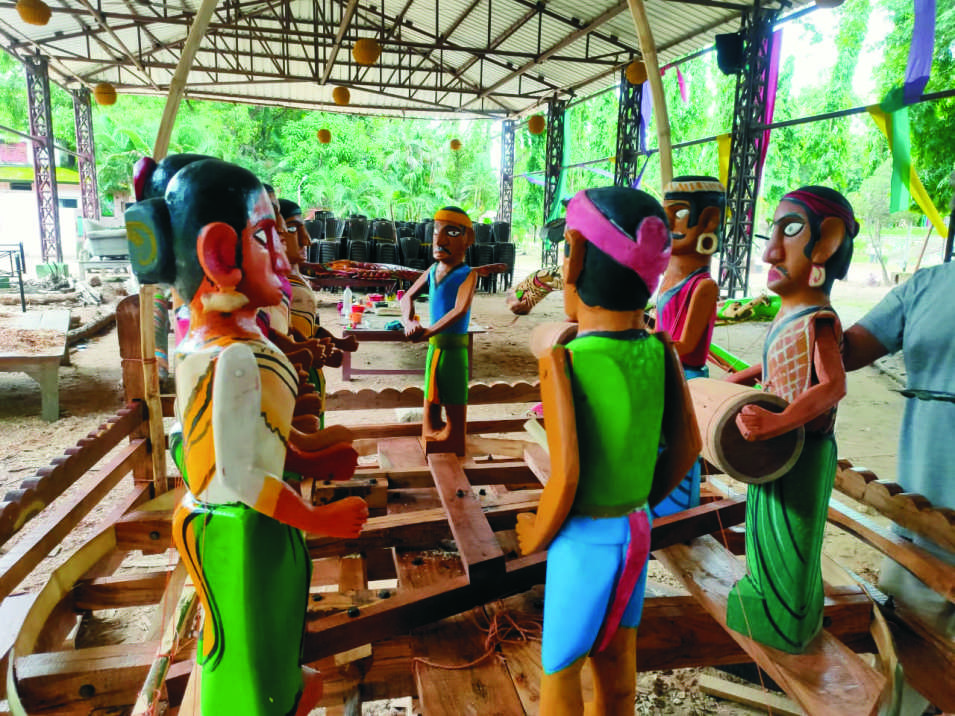
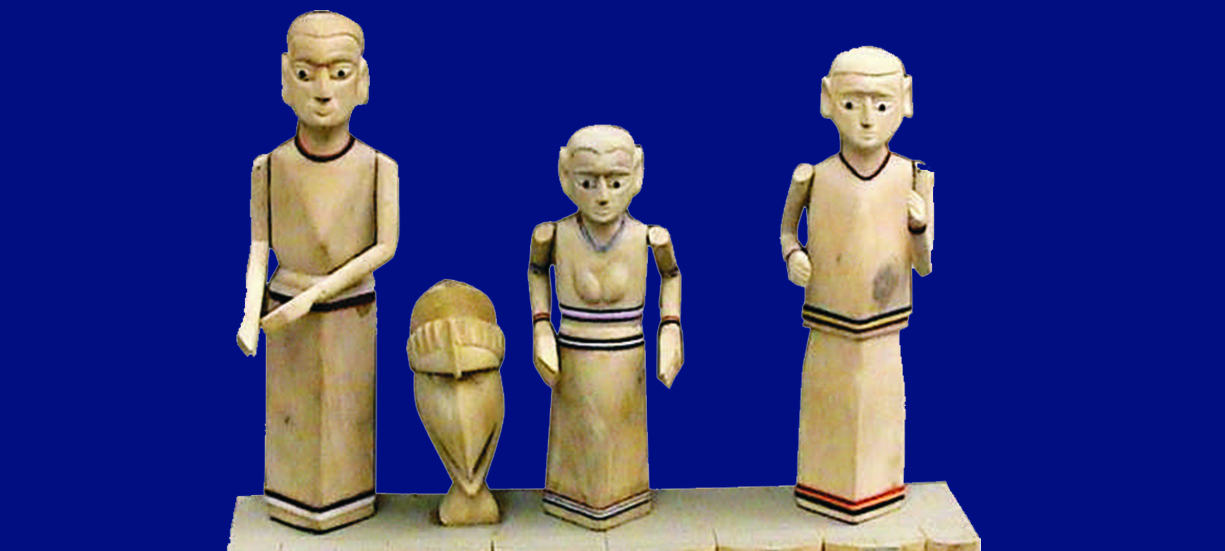
 Government of India
Government of India


